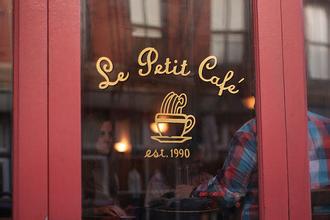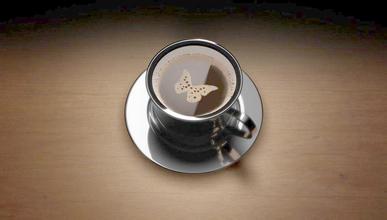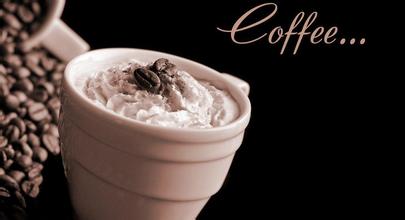The relationship between sour, sweet, salty and bitter coffee and baking
The relationship between sour, sweet, salty and bitter coffee and baking
Coffee essence.
There are two categories: volatile aroma components [basically aliphatic and benzoic acid, phenylacetic acid] and weakly volatile or non-volatile acids [affecting the taste quality of coffee].
Volatile acids: volatile acids are produced during the heating degradation of sugars, mainly glucose, which is degraded into formic acid and acetic acid by heating. Some fatty acids are produced by heating and oxidation of long-chain fatty acids. And, of course, some non-volatile acids. The content of volatile acid in the whole coffee is not high, but it not only has the characteristics of acid and characteristic aroma, but also plays an important role in the characteristic aroma of coffee. The existence or formation of corresponding salts and esters of volatile acids is helpful to ensure the stability and special flavor of other important components. In brewed coffee, the main volatile acids are acetic acid (0.59%), citric acid (7.7%), malic acid (7.2%) and tartaric acid (6.2%). As the baking deepens, the content of most volatile acids will increase, especially butyric acid, propionic acid and so on. But the sunflower acid in the fatty acid is not affected very much. In the case of high temperature and high water content, the overall amount of acid will increase. At the same time, with the deepening of baking, all acids began to decrease again, but for volatile acids, these effects were not significant. Therefore, on the whole, volatile acid is not the main cause of acid production in coffee.
Nonvolatile acids: non-volatile acids are the main acids of caffeic acid, including lactic acid, succinic acid, malic acid, tartaric acid, citric acid, fumaric acid, and especially citric acid. At this time, baking has a great effect on acid, that is, the deeper the baking is, the less the acid content is. The reason for its change is that sugars are degraded to form acetic acid, chlorogenic acid (decarboxylated) and carbohydrates rearranged to form decarboxylic acid, as well as the volatility of acetic acid and decarboxylic acid. This means that there is less caffeic acid in deep roasting and more caffeic acid in shallow roasting. In the whole coffee, it is mainly non-volatile acid and chlorogenic acid, accounting for 66.7% of all organic acids, so most of the caffeic acid is due to the above non-volatile acids. More interestingly, the phenolic acid in coffee is degraded and the content of carboxylic acid increases. Based on this, the best roasting for acid treatment should be when the coffee's PH value begins to increase.

Important Notice :
前街咖啡 FrontStreet Coffee has moved to new addredd:
FrontStreet Coffee Address: 315,Donghua East Road,GuangZhou
Tel:020 38364473
- Prev

Sumatran Coffee Flavor description introduction to the characteristics of taste varieties in the manor area
Sumatran Coffee Flavor describes the taste characteristics of the manor area an excerpt of Sumatran coffee with a large cup of Sumatran coffee in hand, a wonderful warm and mellow feeling arises spontaneously. To me, this feeling is different from any other coffee. After drinking this wonderful brew of coffee for the first time, I feel comfortable and refreshing. I am slow in this wonderful experience
- Next

Shelf life of roasted coffee beans-step diagram of hand-brewed coffee
The shelf life of roasted coffee beans-step diagram of hand-brewed coffee, which will be more attractive, a former beauty in her seventies and eighties or a cardamom girl in her 2008s? The flavor and aroma performance of a top coffee in recession may not be as good as that of ordinary coffee in its prime. Therefore, when buying coffee beans, we should not only look at the brand and variety, but also have a very heavy production date.
Related
- What brand of black coffee is the most authentic and delicious? what are the characteristics of the flavor of the authentic Rose Summer Black Coffee?
- Introduction to the principle and characteristics of the correct use of mocha pot A detailed course of mocha pot brewing coffee is described in five steps.
- Which is better, decaf or regular coffee? how is decaf made?
- How much is a bag of four cat coffee?
- How about four Cat Coffee or Nestle Coffee? why is it a cheap scam?
- Which is better, Yunnan four Cats Coffee or Nestle Coffee? How about cat coffee? is it a fake scam? why is it so cheap?
- How about Cat Coffee? what grade is a hoax? which instant coffee tastes better, four Cat Coffee, Nestle Coffee or G7 coffee?
- Process flow chart of coffee making-Starbucks coffee making process what coffee tastes good at Starbucks
- The top ten best coffee beans in the world Rose summer coffee or Tanzanian coffee tastes good
- Yunnan four cat coffee is good to drink?_four cat coffee is a big brand? four cat blue mountain coffee is fake?

